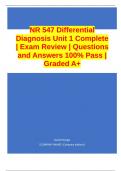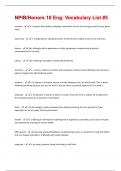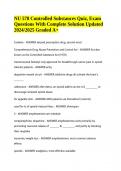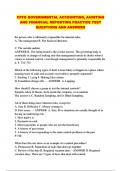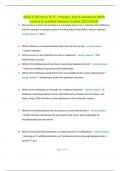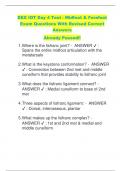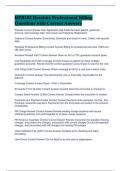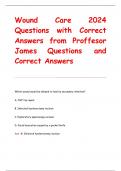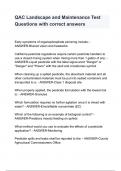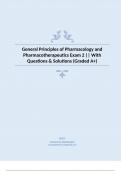Exam (elaborations)
NR 547 Differential Diagnosis Unit 1 Complete | Exam Review | Questions and Answers 100% Pass | Graded A+
- Institution
- Chamberlain College Of Nursing
NR 547 Differential Diagnosis Unit 1 Complete | Exam Review | Questions and Answers 100% Pass | Graded A+
[Show more]
